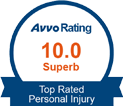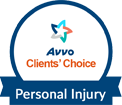Walking is one of the best methods to exercise. It also helps prevent environmental pollution, and it is an excellent way to enjoy the weather and sights of California. However, despite all its benefits, you can sustain catastrophic injuries from walking when you are involved in a pedestrian accident.
Knock-down pedestrian accidents result in the most catastrophic form of injuries. You may be hit by a car, van, truck, or motorcycle as you cross a crosswalk or walk alongside a street. These injuries can impose a substantial financial burden, as well as lower the quality of your life.
You will need a California pedestrian accident attorney to assist you in recovering monetary compensation for your injuries. We at The Personal Injury Attorney Law Firm have extensive experience in helping victims of pedestrian accidents receive the value of financial compensation they deserve. Contact us to learn more about our services.
How Common are Fatal Pedestrian Accidents?
Walking is much safer compared to driving, but it is still hazardous. As per the American Association of Retired Persons, a person is killed in a pedestrian accident in the United States every two hours. Between 2003 and 2012, 47,025 individuals died nationwide due to pedestrian accidents; further 676,000 sustained injuries in a pedestrian crash.
It is mostly older adults who are at a high risk of death and sustaining catastrophic injuries in a pedestrian accident. Aged people make up 13% of the total population in the United States, yet 21% of them die from pedestrian crashes.
A vehicle’s speed also determines whether the victim of the pedestrian crash may survive, and the severity and nature of the injuries he/she sustains. If a vehicle is traveling at 20 miles per hour and it hits some pedestrians, 90% of them will survive. However, if its speed is 45 miles per hour, only 35% of them will survive.
The Most Common Types of Pedestrian Accidents Causing Catastrophic Injuries
There are different types of pedestrian accidents, and each of them carries with it the risk of a catastrophic injury or even death. All these types have one single theme: a person is knocked down by a motor vehicle or a motorcycle. Because pedestrian accidents are unprotected, they can cause severe harm.
Though pedestrian accidents have a single theme, each of them is unique and may be caused by special circumstances. Below, we list for you the most common types of pedestrian accidents:
1. Backing Vehicle Pedestrian Accident
These accidents mainly happen in parking lots. They can also occur on streets that offer low visibility to motor vehicle drivers who intend to back onto the highway. When a backing vehicle-pedestrian accident occurs, it is primarily the driver who will be held liable for it. This is because motorists have a legal duty to know their surroundings and take extreme caution when backing up to avoid hitting pedestrians.
2. Play or Work Accidents
When children are playing in a residential area, they may accidentally run into the highway in search of a ball or chase another child down the street. Also, some construction workers are usually obligated to carry out repair and maintenance work while staying in the center of the highway. Speed is the major cause of play and work accidents because motorists have a legal duty to avoid excessive speeds in work zones and residential areas.
3. Pedestrian Crossing a Highway
Typically, pedestrians who are crossing on and off ramps and limited access highways are at a high risk of being involved in a crash. As a pedestrian, you should refrain from attempting to cross these highways. However, you may be forced to cross if your car is broken down or has been involved in a minor crash. In such a situation, the best thing for you to do is to remain inside your vehicle and turn on the hazard lights.
4. Off-Road Accidents with Pedestrians
This type of accident occurs off of the highway. For instance, a vehicle may leave the road and strike an individual who is walking on the sidewalk. Or rather, a person may be hit by a car leaving an alley or when he/she is standing close to the edge of the road, probably at a bus stop or next to a disabled vehicle. Intoxicated driving is a major cause of this type of accident.
5. Pedestrians Walking on the Side of the Road
As a pedestrian, you should always utilize a sidewalk if you would like to walk on a busy street. However, some busy streets do not have sidewalks, and you may be obligated to use the right side of the road. A motorist may not see you due to inclement weather or nighttime conditions, thus accidentally hitting you.
6. Through Vehicle at an Intersection
A pedestrian may be crossing an intersection, and a car that is traveling straight through the intersection hits him/her. The most common causes of this type of accident include running a stop sign or light, defective traffic signals, or insufficient traffic control signs. Motorists usually cause such accidents, and they will be held liable for damages.
7. Turning Vehicle at an Intersection
Primarily, the causes of this type of accident are poor visibility and distracted driving. The pedestrian may be crossing the highway, and the motor vehicle driver strikes him/her while turning either left or right. In most instances, it will be the driver who will be held at fault for such an accident. However, other factors, such as whether the pedestrian was legally entitled to cross the intersection or if he/she had put on dark clothes at night, may prompt the defense team to argue for comparative liability.
8. Not Yielding at a Crosswalk
Typically, crosswalks are located in busy intersections and thoroughfares to enable pedestrians to reach their destinations more efficiently. According to California's traffic laws, motorists should stop if they see any pedestrian crossing a crosswalk. However, some motorists may be impatient and fail to pay attention and hit a pedestrian trying to cross.
9. The Midblock Dart and Dash
The court will hold the pedestrian primarily at fault for this type of accident, but the motorist may have contributed to its severity and likelihood. Here, the pedestrian approaches a street that is on the vehicle’s path from the side of the road and attempts to cross it. While the pedestrian is crossing the street, the car strikes him/her as it is moving. Such an accident would result in gross, catastrophic injuries, especially if the motor vehicle driver was speeding. Of course, the pedestrian will be at fault for failing to cross on a crosswalk, but the driver may also be held liable if he/she was speeding.
10. The Multiple Threat Crash
Multiple threat crashes are quite similar to the midblock dart and dash. In this type of accident, the pedestrian may be walking in between two stopped vehicles. Then, the pedestrian will move to the next lane, and a motorist hits him/her. The motorist will hit the pedestrian because of failure to notice him/her. Once again, the principle of comparative liability may apply, depending on the driver’s speed.
11. Midblock or Mailbox Vehicle
In this type of accident, the pedestrian may be hit when going through his/her mail, or while he/she interacts with a car on the road's side, for instance, an ice cream truck. The court can hold a driver liable for this type of accident if he/she was speeding or driving distractedly before the crash occurred.
12. School Bus Crossing Accident
Children or parents who are attempting to cross the street to get on or off a school bus are more vulnerable to a crash. For instance, they may be struck by oncoming vehicles that have not yielded to the school bus' stoplights and signals.
Hit and Run Pedestrian Accidents Causing Catastrophic Injuries
It is traumatic to be involved in a pedestrian accident, but it will be much worse if the at-fault motorist fled the accident scene. Typically, in most pedestrian accidents causing catastrophic injuries, the at-fault motorists stop by, assess the degree and magnitude of your injuries, and ensure you receive medical attention. But, if you are too unfortunate to be involved in a hit and run pedestrian accident, you will have to solely rely on good Samaritans to assist you in seeking medical help.
Sometimes, you may be unable to access medical help, and you can even bleed to death, especially if the crash occurred in an isolated area. If you survived the hit and run accident, you should do your best to recover compensation and punish the at-fault motorist.
You can contact the police to assist you in identifying the at-fault motorist. If the at-fault motorist remains unidentified, you should consider pursuing compensation under your uninsured motorist coverage.
Common Pedestrian Accident Catastrophic Injuries
The most common types of pedestrian accident catastrophic injuries include:
- Traumatic brain injuries — Traumatic brain injuries are a result of outside forces that causes the brain to dysfunction. For instance, the impact of the crash may result in an extremely violent blow to the head, which malfunctions the brain.
- Spinal cord injuries — Just like traumatic brain injuries, spinal cord injuries are brought about by sudden blows that dislocate or lead to fractured Since the spinal code is mandated with transmitting signals to the brain, even small damage may bring about life-changing consequences.
- Fractures — A bone may be fractured if the physical force exerted on it is too strong for it to handle. Fractures are treatable, but they may result in medical problems and lifelong pain that can affect the victim’s overall wellbeing.
- Soft tissue injuries — Some examples of soft tissue injuries include bruises, sprains, lacerations, dislocations, and tears. Though these injuries may be considered minor, they can result in significant pain to the victims and keep them from resuming their routines. Additionally, the victims may have to deal with ugly scarring for the rest of their lives.
- Amputations — The crash may accidentally amputate the victim’s limbs, causing serious lifelong repercussions.
- Broken bones— The impact of the crash may lead to bone breakage. Broken bones cause severe pain, and they may need intensive medical care.
- Road burn — Road burn occurs when the skin is exposed to the road at extremely high speeds. When a car hits a pedestrian, the pedestrian may be thrown to the ground and forced to skid across the street. While skidding, heat and friction is created, which causes severe skin injuries.
The Financial Burden of Pedestrian Accident Catastrophic Injuries
The injuries sustained in a pedestrian accident may be physically painful, but they can also make you suffer a huge financial burden. Although you may have medical insurance, it may be unable to cover for catastrophic injuries since they require intensive care.
Furthermore, you may be unable to resume your routine, including your work, because you will be obliged to focus on your recovery entirely. The medical treatment process may take several days or even a couple of months. Within this timeframe, you will not be receiving your regular pay stub. If your job is physically demanding (such as the service or construction industry), the injuries you have sustained will affect your work performance and lower your earning capacity. You may also suffer from the emotional trauma that may affect your ability to continue practicing your career or even lead a normal life.
Proving Liability in Pedestrian Accidents
In any pedestrian crash, the victim must determine the at-fault party and the extent of his/her fault. The state of California has various right-of-way traffic laws that are primarily meant to protect pedestrians. If a motorist violates one or more of these laws when a crash occurs, the court may hold the motorist liable for the accident. For instance, according to the California Vehicle Code 21950(a), a motorist should yield to the pedestrian’s right-of-way when he/she is attempting to cross a crosswalk, whether marked or unmarked.
In a typical pedestrian accident personal injury lawsuit, you will have to show that the at-fault party acted negligently. For you to prove negligence, you must show that the defendant had a duty of care, which he/she breached it. You must also illustrate that it is a result of the breach that the accident occurred, and you sustained catastrophic injuries because of the crash. It can be quite easy to illustrate a driver’s negligence if he/she was speeding, engaging in distracted or aggressive driving, or driving while under the influence.
Gathering Evidence
There are several steps you should take after you have been involved in a pedestrian accident. These steps include:
- Contact the police
- Speak to the eyewitnesses of the crash
- Record the personal details of other people involved in the accident, including names, contact addresses, residential addresses, and insurance information
- Take pictures of the accident scene
- Seek medical help
However, when you sustain catastrophic injuries in a pedestrian crash, you may be unable to take the above-listed steps. A car may hit you and leave you lying on a street unconscious, and you may have to depend on well-wishers to take you to the hospital. Sometimes, you may be completely shocked about the grievous ordeal; and you may even forget to jot down the personal information of other people involved in the crash. Other motorists may hit you and flee the accident scene because they do not want to bear responsibility.
If, in any event, you were unable to gather evidence at the accident scene, you should consult a personal injury attorney. Even if you believe you have sufficient evidence to identify the at-fault party, you should first speak with an accident attorney before filing a claim at the insurance company.
A personal injury attorney will assist you in gathering evidence and establishing the at-fault party. With his/her help, you will be able to collect witness statements and accident scene photographs and videos. A knowledgeable pedestrian accident attorney knows how motorists may try to shift blame to the injured pedestrian. This will enable him/her to distinguish crucial solid evidence that will strongly illustrate that the motorist was at fault.
Potential Compensation
Pedestrian accidents involving catastrophic injuries result in a high-dollar worth of monetary damages. It is challenging to calculate the exact value of your case, and this is why you should reach out to a personal injury attorney. Catastrophic injuries are priced on the high-dollar end because of their nature and severity.
Typically, there are three types of damages that the court awards in a pedestrian accident lawsuit. These types of damages include special damages, general damages, and punitive damages. Special damages will cover losses that can be quantified monetarily, such as medical expenses and past and future lost earnings. On the other hand, general damages cater to losses that cannot be expressed in monetary terms like trauma, pain and suffering, and emotional and mental anguish.
The primary purpose of punitive damages is to punish the defendant for his/her wrongful conduct. Punitive damages are not frequently awarded in pedestrian accident lawsuits, but the court may award them in cases involving hit and run. The total value of punitive damages may be up to three times the value of both general and special damages.
If your loved one died in a pedestrian crash, you could institute a wrongful death lawsuit to recover compensation. The damages in a wrongful death lawsuit will cover for burial, and funeral expenses, loss of consortium, loss of support & companionship, and lost wages the victim would have earned had he/she survived.
When to File a Pedestrian Accident Lawsuit
The first thing you should do after you have sustained a catastrophic injury in a pedestrian accident is to seek medical attention. If you don’t, your injuries will become more grievous, and they may even result in death.
In California, there is a Statute of Limitations – a law that prescribes the time limits for instituting any civil lawsuit. A pedestrian accident victim should file a personal injury lawsuit to recover compensation within two years from the time when the accident occurred. If these two years lapse, the victim will lose his/her right to sue for compensation. However, this timeframe may be extended in specific circumstances.
Some pedestrian accidents may be caused by defective or dangerous roads. In such cases, you will have to sue the governmental agency that is in charge of repairing and maintaining the road in proper condition. As per the California Government Code Section 911.2, you should institute a personal injury claim against the government within six months from the occurrence of the crash.
It is recommended that you should discuss with a personal injury attorney about the accident as soon as possible, probably immediately after you have accessed medical treatment. Note that the attorney whom you retain will not institute the lawsuit immediately; he/she will first have to send a settlement demand package to the insurer of the at-fault party. After the insurance company has received the demand package, it will make a counteroffer to your attorney. Then, your attorney will enter into negotiations with the insurance company to decide on an appropriate settlement amount. Your attorney will only institute a personal injury lawsuit if he/she believes that the insurer's proposed settlement amount will not compensate you adequately for your injuries.
Find a Pedestrian Accident Attorney Near Me
If you sustained catastrophic injuries in a pedestrian crash, you should speak to an attorney to determine how you can seek compensation. We at The Personal Injury Attorney Law Firm understand the grievous nature of catastrophic injuries, and how they can affect your quality of life and that of your loved ones.
Catastrophic injuries attract high-dollar amounts for compensation, which most insurance companies in California may be unwilling to pay. You are much better placed to receive compensation for a catastrophic injury if you have an attorney by your side.
Our attorneys work on a contingency-fee-basis, and we guarantee no fees until you win. We serve the whole of California. Call us today at 619-625-8707 for a free initial consultation.
 800-492-6718
800-492-6718







